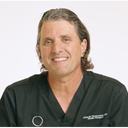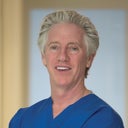Posted underFacelift q&a
How effective is a mid facelift done with under eye incisions that also fix undereye hollows?
Answers (13)
From board-certified doctors and trusted medical professionals
Dr. Jed H. Horowitz, MD, FACS

Dr. Jed H. Horowitz, MD, FACS
Board Certified Plastic Surgeon
Answer
Dr. Sheila S. Nazarian, MD

Dr. Sheila S. Nazarian, MD
Board Certified Plastic Surgeon
Answer
Dr. John Michael Thomassen, MD

Dr. John Michael Thomassen, MD
Board Certified Plastic Surgeon
Answer
Dr. Vincent N. Zubowicz, MD

Dr. Vincent N. Zubowicz, MD
Board Certified Plastic Surgeon
Answer
Dr. John J. Martin, Jr., MD

Dr. John J. Martin, Jr., MD
Oculoplastic Surgeon, Board Certified in Ophthalmology
Answer
Dr. Raghu Athre, MD
Dr. Raghu Athre, MD
Board Certified Facial Plastic Surgeon
Answer
Dr. Richard O. Gregory, MD
Dr. Richard O. Gregory, MD
Board Certified Plastic Surgeon
Answer
Dr. Harry V. Wright, MD
Dr. Harry V. Wright, MD
Board Certified Facial Plastic Surgeon
Answer
Dr. Richard Sadove, MD
Dr. Richard Sadove, MD
Board Certified Plastic Surgeon
Answer
Dr. Mark T. Boschert, MD
Dr. Mark T. Boschert, MD
Board Certified Plastic Surgeon
Answer
More Facelift Questions
See all Facelift Q&AWE SEND PRETTY
EMAILS
What’s trending? Who’s turning heads? Which TikTok myths need busting? We’ve got you. No fluff, no gatekeeping—just real talk. Get our free, unfiltered newsletter.